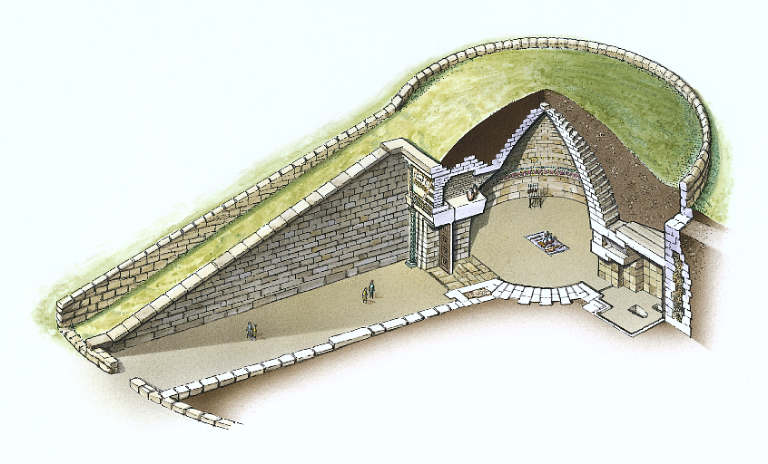Tholos Tomb
The tholos tomb is a round, beehive shaped structure famously built by the late Bronze Age Mycenean peoples. These were royal examples of the commonly employed chamber tomb. A rounded cut was made into a hillside, within which huge ashlar masonry would be employed to create a conical structure, with a wide entryway leading to it, known as a dromos. The chamber itself was built by placing each successive course of stonework out over the previous one, tapering the diameter of the room gradually up to the top. The cut was then refilled on top of the structure, creating a large underground chamber. The dead we laid on the floor of the main room, or in rare cases, in smaller separate rooms built adjacent to it.
 Source:http://www.dkimages.com/discover/previews/864/20213145.JPG
Source:http://www.dkimages.com/discover/previews/864/20213145.JPG
These tombs are conspicuous, and could be huge. The most famous of these tholoi is the so-called “Treasury of Atreus” at Mycenae. The central room is 14.6m across and 13.5m high at it’s apex. Even the smaller of the rectangular stone blocks of which it is constructed would have involved significant engineering to quarry and move. The doorway, itself a gigantic 5.4 by 2.7 m, was spanned by a single lintel stone, thought to weigh over 120 tons, with a relieving triangle above it. Though employing technically simple architectural techniques, these tombs were built to achieve monumental effect, often so successfully as to merit offerings from later peoples and associations with hero cults.
Biers, William R. The Archaeology of Greece. Ithaca: Cornell University Press, 1980.
